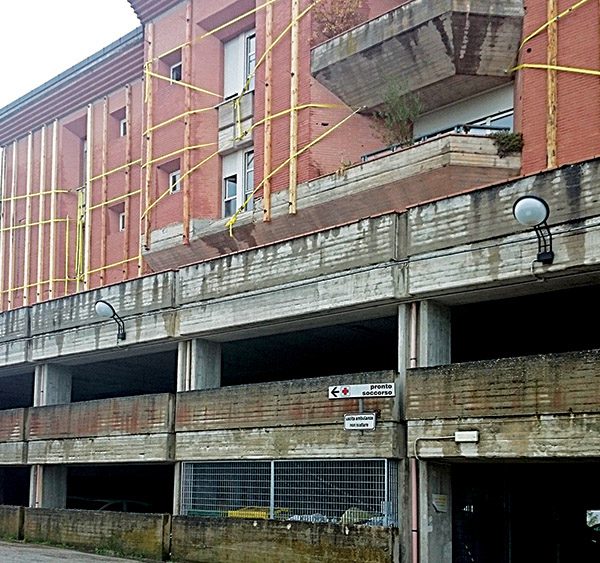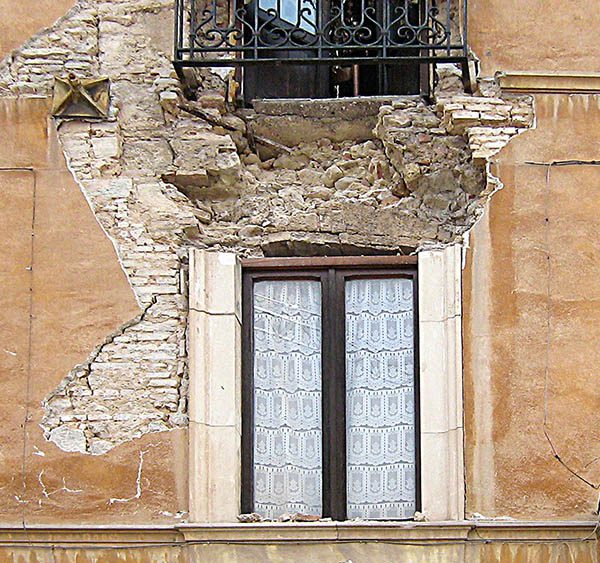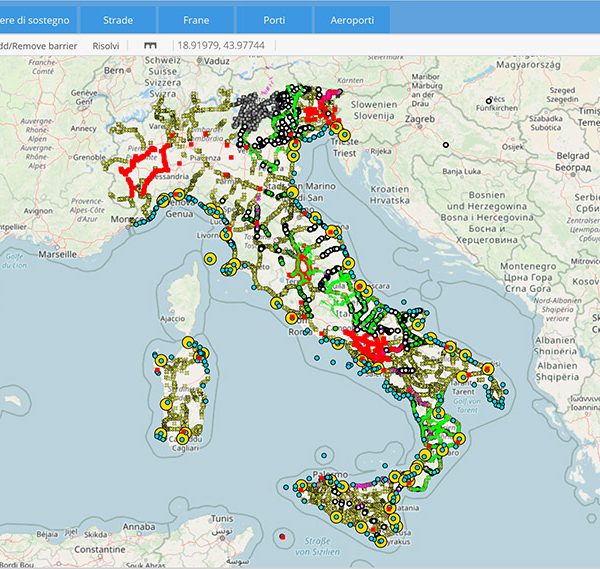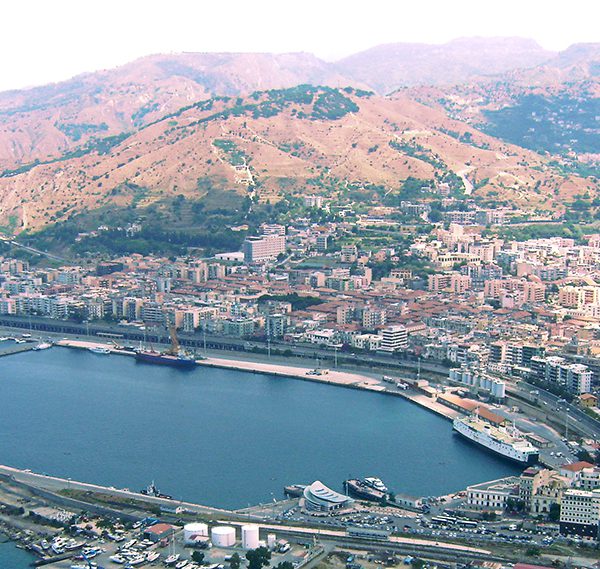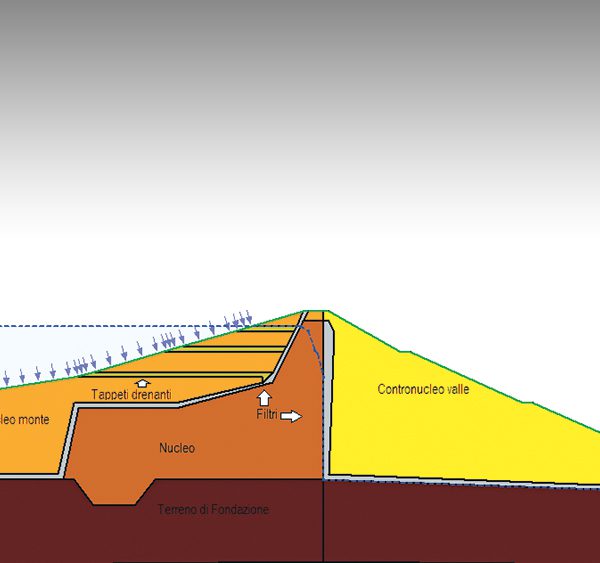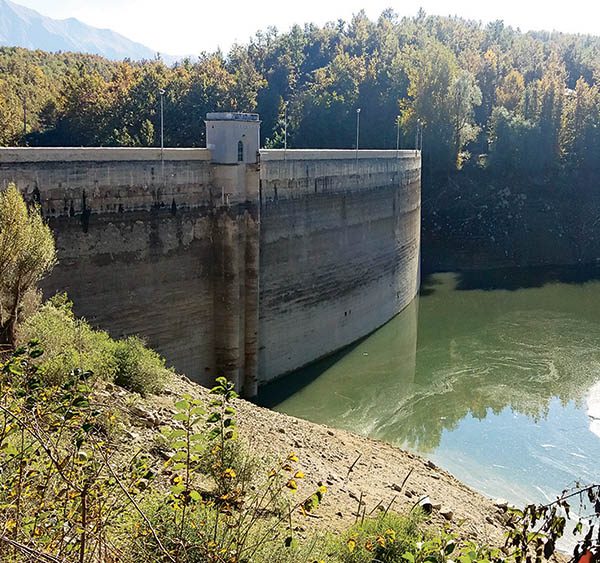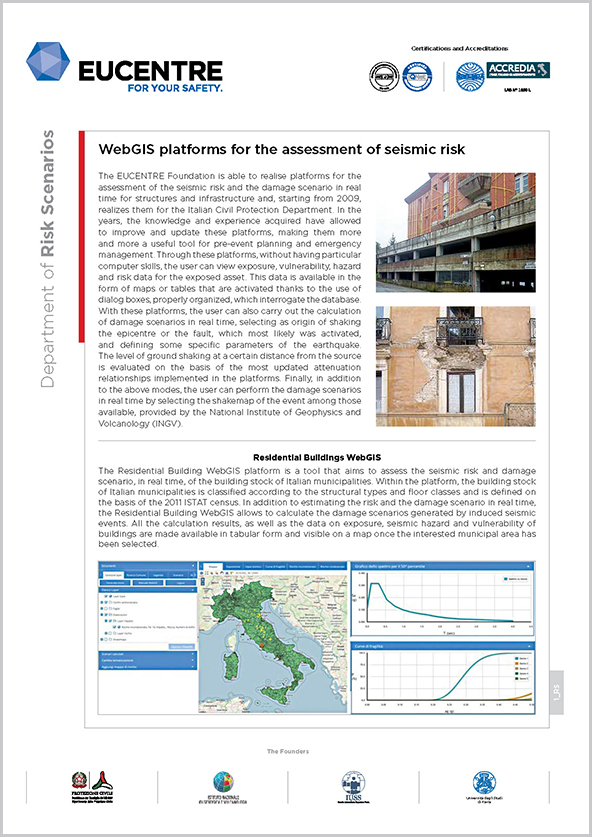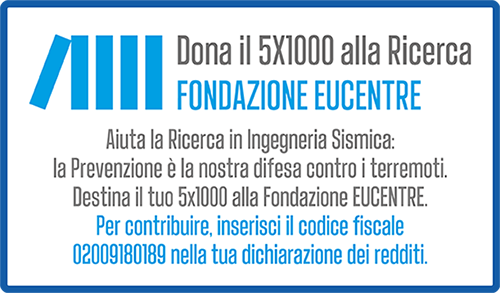Department of Risk Scenarios
The EUCENTRE Foundation is able to realise platforms for the assessment of the seismic risk and the damage scenario in real time for structures and infrastructure and, starting from 2009, realizes them for the Italian Civil Protection Department. In the years, the knowledge and experience acquired have allowed to improve and update these platforms, making them more and more a useful tool for pre-event planning and emergency management. Through these platforms, without having particular computer skills, the user can view exposure, vulnerability, hazard and risk data for the exposed asset. This data is available in the form of maps or tables that are activated thanks to the use of dialog boxes, properly organized, which interrogate the database. With these platforms, the user can also carry out the calculation of damage scenarios in real time, selecting as origin of shaking the epicentre or the fault, which most likely was activated, and defining some specific parameters of the earthquake.
The level of ground shaking at a certain distance from the source is evaluated on the basis of the most updated attenuation relationships implemented in the platforms. Finally, in addition to the above modes, the user can perform the damage scenarios in real time by selecting the shakemap of the event among those available, provided by the National Institute of Geophysics and Volcanology (INGV).
Residential Buildings WebGIS
The Residential Building WebGIS platform is a tool that aims to assess the seismic risk and damage scenario, in real time, of the building stock of Italian municipalities. Within the platform, the building stock of Italian municipalities is classified according to the structural types and floor classes and is defined on the basis of the 2011 ISTAT census. In addition to estimating the risk and the damage scenario in real time, the Residential Building WebGIS allows to calculate the damage scenarios generated by induced seismic events. All the calculation results, as well as the data on exposure, seismic hazard and vulnerability of buildings are made available in tabular form and visible on a map once the interested municipal area has been selected.
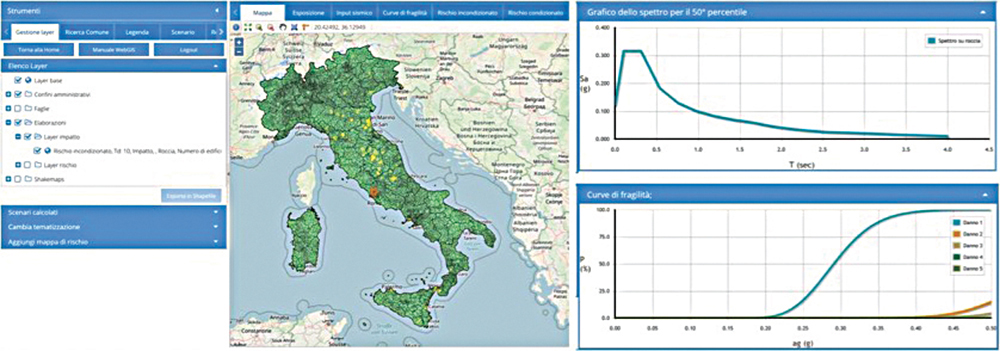
School Buildings WebGIS
The School Buildings WebGIS platform allows the real time assessment of the seismic risk and the damage scenario of the Italian schools. Within the platform, there are three databases: the first, and broadest, is the School Registry Office, which collects the data sheets compiled in all the Italian regions. The second is the database of level II GNDT data sheets, compiled only in some regions of the country but with a greater level of detail than the data sheets of the Registry Office with regard to the identification of the structural capacity of the building. Finally, there are the summary data sheets of “level 1” or “level 2” seismic assessment for the strategic buildings for civil protection purposes or relevant in case of collapse following a seismic event, collected for about 4000 Italian school buildings.
Hospitals WebGIS
The Hospital WebGIS platform allows viewing the data relating to hospital buildings collected with different types of data sheet and the associated seismic risk. The data sheets on the platform are the “level 0”, “level 1” and “level 2” summary sheets of the seismic assessment for strategic buildings for civil protection purposes or relevant in the event of collapse following of seismic event. Furthermore, there are data sheets specially developed for the hospitals of the Lombardy Region, collected within an agreement between the Region itself and EUCENTRE.
Infrastructures WebGIS
The Infrastructure WebGIS is a platform that allows calculating the seismic risk and damage scenarios in real time for the infrastructures present on the Italian territory. The infrastructures taken into consideration are those of the road system, in particular bridges, tunnels and retaining structures, together with port systems and airports. The Infrastructure WebGIS platform allows also taking into account any co-seismic effects, such as landslides and, with particular reference to port areas, susceptibility to liquefaction. Downstream of a scenario calculation, the platform also allows defining alternative roads to the shorter and generally used ones, when the latter are no longer accessible due to one or more infrastructure damaged by an earthquake of a certain intensity. Finally, the Infrastructure WebGIS shows the operational level following a seismic event of ports and airports, which represent privileged entry points in case of emergency. These features are particularly useful for decision-making bodies to quickly identify the safest paths to be taken by the first responders in case of emergency.
Dams WebGIS
EUCENTRE has developed a WebGIS platform of the dams present on the national territory and of the seismic risk associated with the earth dams. An automatic calculation code can be used on the platform for “real-time” or “quasi-real” fast assessments of the seismic response of earth dams following a real or scenario earthquake. In the immediately subsequent stages to the earthquake, this fast assessment is useful to understand if the earthquake may have induced significant damage to a dam using a quick and binary response (i.e., whether or not there is a potential problem). More complex analysis for more precise results would require longer calculation times and a considerable amount of information and data.

